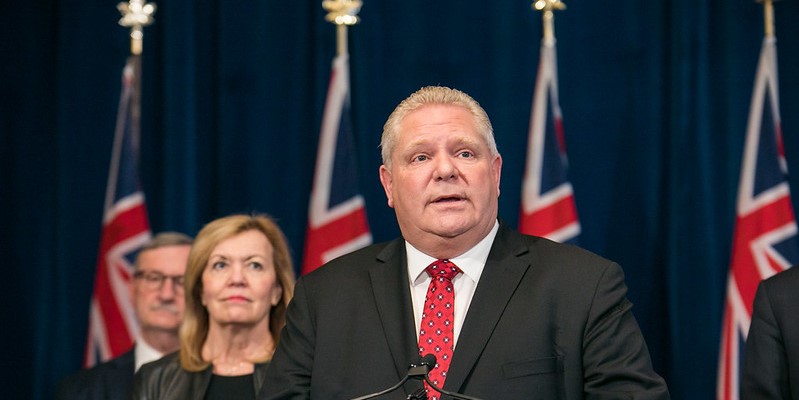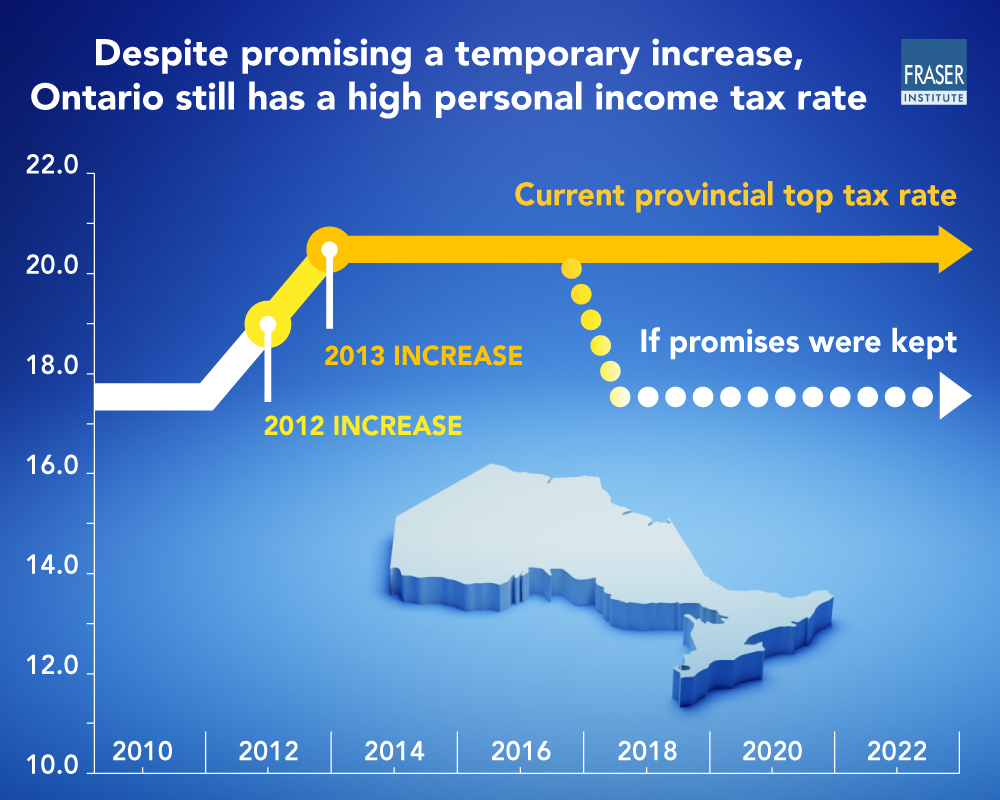Ontario’s ‘temporary’ tax increases may never go away

Famed economist Milton Friedman once said that there’s nothing “so permanent as a temporary government program.” Ontario’s experience suggests this adage also applies to temporary tax hikes.
A recent study published by the Fraser Institute shows that while Ontario’s highest personal income tax rates were introduced explicitly as a temporary measure, 10 years later they’re still in place and there’s no sign they’re going anywhere soon.
In 2012, despite promising not to do so on the campaign trail during a recent election, then-premier Dalton McGuinty raised the province’s top income tax rate twice. The government made it clear the hikes were not meant to last, repeatedly referring to the “temporary deficit-fighting high income tax bracket” in the budget that implemented them and promising it would be eliminated by 2017/18.
The promised expiry date for these tax hikes has obviously come and gone. The infographic below compares what was promised on the personal income tax front to what has actually happened in Ontario.

Instead of briefly going up before going back down, Ontario’s top provincial personal income tax rate has stayed at the elevated supposedly temporary level. Of course, Ontario taxpayers also must pay the federal personal income tax rate, which has also gone up in recent years for much of the same group of taxpayers.
The combined effect of these hikes is that for engineers, doctors and other skilled professionals subject to this tax rate, each new dollar they earn is taxed at 53.53 per cent. And that’s before we factor in the 13 per cent in HST on almost all purchases, excise taxes and host of other taxes everyone must pay. Once all the taxes are added in, many skilled workers are left with much less than half any additional income they earn. It’s straightforward to see how this discourages hard work and productivity.
In addition to making it harder for people who are already here to get ahead, the double whammy of higher provincial and federal income tax rates puts the province at a disadvantage in attracting talent from other places, especially people who are highly mobile.
The provincial government often speaks about the need for a strong technology sector in the province, but has taken no action to address sky-high tax rates that make it harder to attract workers needed to help the tech sector grow and thrive. In fact, Ontario now has the fourth-highest combined income tax rate in Canada or the United States, often putting the province at a 10-percentage point disadvantage (or more) compared to the U.S. states with whom Ontario often competes for top talent.
The Ford government could address these challenges by making good on the McGuinty government’s initial promise that Ontario’s tax rate hike would be temporary. It hasn’t done so yet. This helps underscore an important problem with “temporary” tax increases—governments get used to having the additional revenue and often find ways to spend it instead of sticking to their word and letting taxpayers keep the money they earn. For example, the Ford government has been consistently spending more money than the Wynne government ever did. Even for politicians who talk a good game about the need for taxpayers to keep more of the money they earn (as Ford often did in the past), the temptation to keep temporary tax increases permanent often proves irresistible.
Professor Friedman long ago warned about temporary government programs that often stay permanent. Ontario’s experience under premiers McGuinty, Wynne and now Ford shows that the same is often true of supposedly temporary tax hikes.
Author:
Subscribe to the Fraser Institute
Get the latest news from the Fraser Institute on the latest research studies, news and events.

